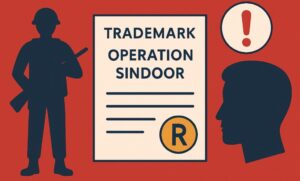Food plating — the positioning and presentation of food on a plate has matured into its own craft; showcasing chefs around the globe serving up more than just taste alone. In addition to aesthetics, it sets up your dining experience and reflect the brand identity of a restaurant. Chefs and restaurateurs have resorted to intellectual property (IP) law in different countries around the world, for protecting their unique forms of plating. But in India, copyright law does not allow for food plating to be protected easily: the same is because of two key reasons; firstly, food being highly perishable items and secondly primary purpose of using dishes as they serve a functional role. This article takes a closer look at the intersection of Indian copyright law and food plating, covering eligibility requirements and mechanisms for protection as well as some significant challenges.
Table of Contents
ToggleCopyright Eligibility for Food Plating in India
Under the Copyright Act of 1957, copyright protection in India applies to original works of art, literature, music, and more. For a work to be eligible, it generally must meet two main requirements:
- Originality: The work must be independently created and exhibit some degree of creativity. Unique arrangements on a plate can meet the originality criterion if they are distinct and crafted through the chef’s skill and effort.
- Fixation: The work must be recorded or captured in a lasting format to qualify for copyright. Here, the perishable nature of food presents a challenge, as food plating is temporary and changes quickly. Without fixation, it’s difficult to establish that a creative arrangement qualifies as a protectable work.
However, Indian Copyright Law does not automatically deem the plating of food copyrightable. Chefs have no immediate legal protection for their plating, but by photographing it they can at least preserve the creative arrangement in a fixed medium. This approach means the copyright is granted to the photograph or video itself—not the plated arrangement—which still presents some limitations but can deter unauthorized reproduction of the image.
Protecting Food Plating in India: Alternative Approaches
Despite the challenges, several IP options could provide indirect protection for food plating in India:
- Photographic Copyright: Chefs can secure some level of copyright protection by photographing or filming their plated dishes. While this does not copyright the actual plating technique or style, it does provide legal protection for the specific visual representation captured in the image or video. This means others cannot legally use these visuals for their own promotion or benefit without permission, which can be valuable for brand protection and exclusivity, even if it doesn’t cover the plating method itself.
- Design Rights: Under India’s Design Act of 2000, design protection applies to shapes, configurations, and patterns applied to a product that is manufactured and sold. Food plating, though capable of being creative, lacks the qualities typically required of “products” under the Act due to its perishable nature and immediate consumption. Unlike food items such as chocolates and candies, which are categorized under the Locarno Classification for industrial designs, food plating is not intended to be standardized or consumed reproducibly; hence, it does not align with the qualifying proprietary criteria for design protection.
- Trademark and Trade Dress: While trademarks protect brand names and logos, trade dress can protect the overall look and feel of a product or establishment if it becomes recognizable to consumers. For instance, if a restaurant consistently uses a specific plating style with unique visual cues, it might be possible to argue trade dress protection for branding purposes. But that is hard to prove in practice because it needs compelling evidence of isolation — proof customers associate the style of an aspect plated by a certain restaurant only with that one restaurant.
- Contractual Protections: Chefs and restaurants may use non-compete clauses and Non-Disclosure Agreements (NDAs) in employee contracts to prevent staff from sharing proprietary plating techniques or unique presentation styles when they leave. These agreements can protect the confidentiality of specific plating methods, keeping them exclusive to the establishment. However, while they can deter employees from revealing trade secrets, these contracts do not provide enforceable IP rights over the plating style itself, meaning they protect confidentiality but do not create formal intellectual property protection.
Key Challenges in Achieving Copyright Protection for Food Plating
Even with these alternatives, protecting food plating remains challenging in India for several reasons:
- Perishability and Fixation: The ephemeral nature of plating does not satisfy the fixation requirement for copyright in a more permanent, tangible medium. Food plating is designed to have been seen right away and consumed shortly thereafter, very different from a traditional conception of copyrightable works.
- Functionality: Copyright law does not protect useful objects or items that are intended for use. Given that food plating is the arrangement of food for the purpose of consumption, it can be considered far more functional than artistic, despite showcasing aesthetic creativity. If something performs a function exclusively or in addition to being aesthetically pleasing, then it is difficult to protect the plating directly under the Copyright Act, as copyright does not generally cover functional designs.
- Lack of Legal Precedent: Indian copyright law has scant case law on food and culinary arts; hence, there are no go-to precedent-setting cases on whether the determination of how a plate appears might be an artwork eligible for protection under copyright law. In other countries like the US and France, discussions about IP protection for culinary works have emerged, while India is far from developing a strong legal framework in this sector.
Practical Recommendations for Chefs and Restaurateurs
For chefs and restaurant owners in India interested in protecting their food plating styles, here are some practical steps that can help:
- Photograph and Document: Taking photographs of each distinct plating style can offer a level of protection via copyright for the images themselves.
- Use Contracts and NDAs: Enforcing agreements that prevent employees from copying plating styles can effectively protect unique presentation techniques. Non-disclosure agreements play a crucial role in safeguarding techniques and trade secrets in the culinary world.
- Trademark and Branding: Restaurants have the opportunity to create a unique brand identity through a cohesive plating style and distinctive dish names or logos linked to particular dishes. This can enhance public recognition and deter imitation, even if it doesn’t provide legal protection for the plating style itself.
- Social media and Public Branding: Building a distinctive brand via social media and fostering public awareness around plating styles can enhance recognition without the need for legal measures. Creating a well-known brand and fostering a dedicated customer following can offer tangible defence against imitation.
Conclusion
Food presentation does not enjoy copyright protection in India, as food is transient (disappearing after a meal), functional, and perishable. Although food plating does not fall under the traditional copyright regime, chefs or restaurateurs can explore other methods—such as photographic copyright, branding protections, contractual protections, and trade dress—to safeguard their culinary creations’ presentation. While these solutions provide some level of protection, they ultimately highlight the issue that, in the Indian legal context, food plating lacks force under copyright law. If chefs hope to protect their plating artistry in India, the key is to focus on brand-building and be inventive with alternative IP protections.





